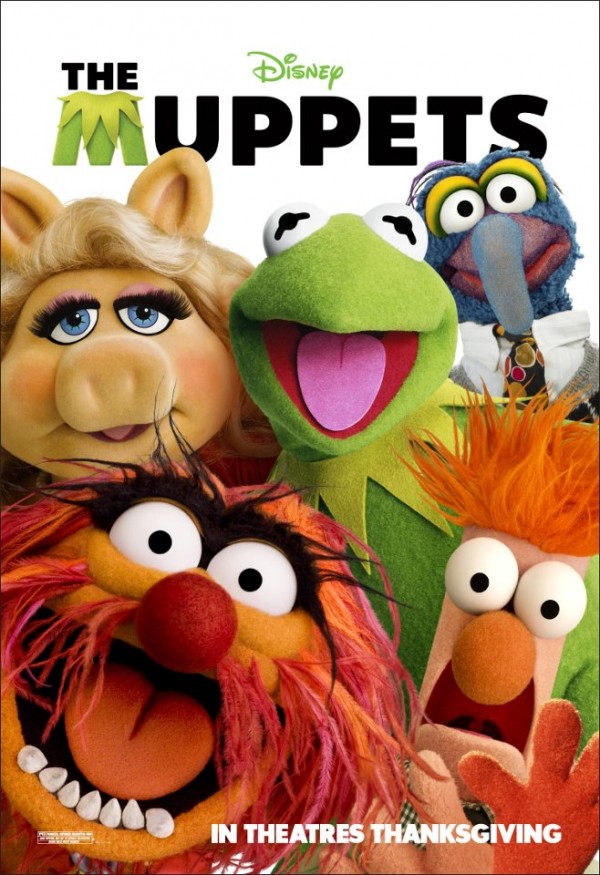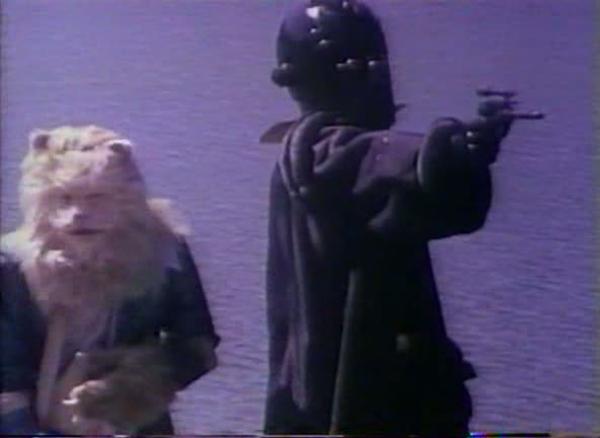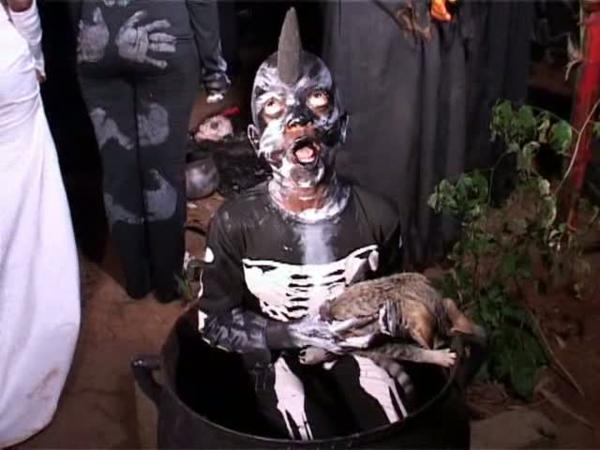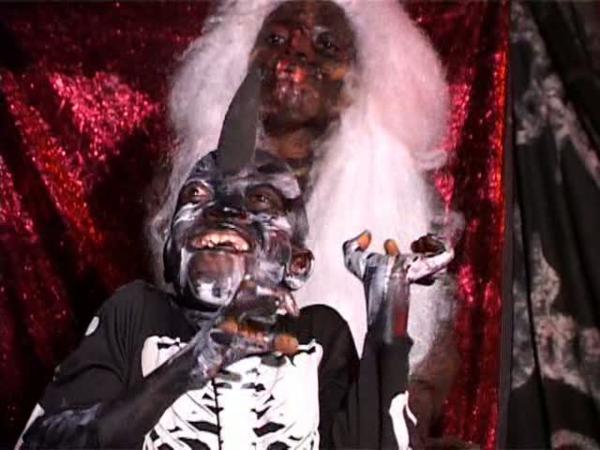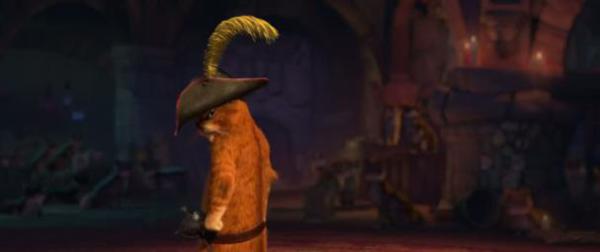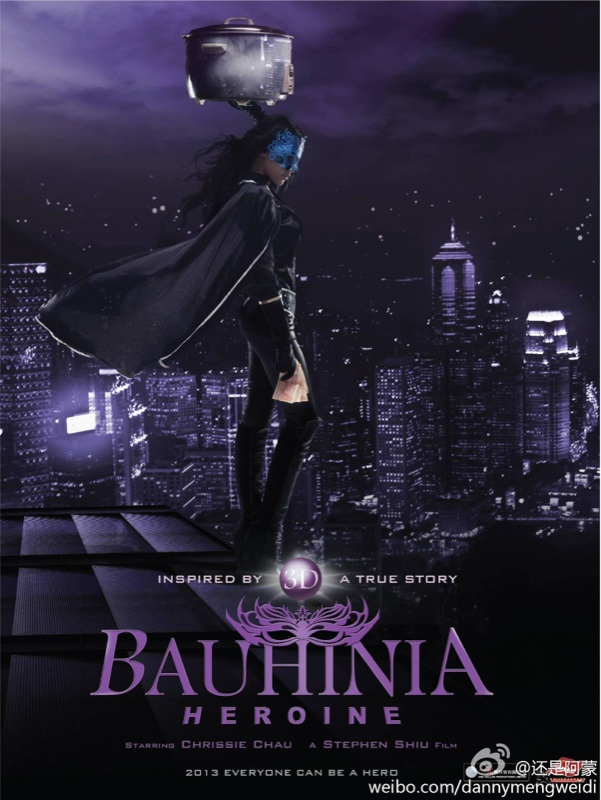The Extra-Terrestrial Cat In Boots (Review)
The Extra-terrestrial Cat In Boots
aka O Gato de Botas Extraterrestre

1990![]()
Directed by Wilson Rodrigues
Written by Rubens Francisco Luchetti

Ladies and Gentlemen, TarsTarkas.NET was served. We were served by Todd at Die, Danger, Die, Die, Kill, in his review of the Mexican Puss in Boots, and he danced a deadly dance of death while everyone hooted an hollered and yelled “Damn” at the backflips and foreflips and flips that were made up of tiny flips with cream filling and cherries on top. When the dust was settled and TarsTarkas.NET was critically wounded by the serving, there was but one choice. Never backing down, TarsTarkas.NET is going to serve back! The gauntlet is thrown…and by gauntlet, I mean the boot! The boot-let, if you will. Yes, we’re serving FourDK with our own live action Puss in Boots! And this time…there’s spaceships!

Yes, it’s true, The Extra-Terrestrial Cat In Boots (O Gato de Botas Extraterrestre) features a spaceship. And a robot. And other weirdo things. But most of all, it features a guy in a cat suit running around doing things. That’s weird enough by itself. The Extra-Terrestrial Cat In Boots largely follows the plot of the original Puss in Boots story by Charles Perrault (though the film erroneously credits it to the Brothers Grimm!), except for the few random goofy things that make this Puss in Boots freaking crazy. The last time we went to Brazil, TarsTarkas.NET was tortured by Os Trapalhões’ Brazilian Star Wars (Os Trapalhões na Guerra dos Planetas). We haven’t been back since, despite an ever-growing pile of Os Trapalhões and Xuxa films preparing to destroy my body and mind. But I’m back, and this time, there is a case of cat litter and a laser light acting as backup. So, Puss, get your boots…it’s dance-off time!
WR-Filmes brings us this Brazilian take, and the credits are primed to tell us that Burman Studios created the cat makeup, while Dr. D. Wes Wheadon did the visual effects of the cat’s eyes. This cat is complicated! And yet, it still looks creepy as hell.

To add more weirdness to things, director/writer/actor Wilson Rodrigues is well known for directing a bunch of softcore Brazilian productions in the early 1980s. He even brings along a pack of the stars of those films, including Puss himself, Heitor Gaiotti! This was Wilson Rodrigues’s last film.


|

Abro Ne Bayie 2 (Review)
Abro Ne Bayie 2

2007![]()
Directed by C’emeka Uba (Don)
Written by Samuel Nyamekye, Fred Asanti Kotoko, and C’emeka Uba (Don)

Abro Ne Bayie 2 is the sequel to the original Abro Ne Bayie, filmed at the same time and featuring most of the same cast (except for characters who were witched away in the last film!) It is the same quality of script and special effects that we had last time, except now the plot moves forward a tad bit more. Hooray for that! But it is still badly written, badly subtitled, and a bunch of rambling crazy stuff instead of a coherent story. Don’t expect character development or answers to the question “Why?” You will never know why, because there isn’t a why. It just is. It’s just Ghana, man. Go with it.

For now, we’ve exhausted our supply of Ghanaian films, but we’ve still got the Ghanaian documentary Ghanaian Video Tales coming soon, and that’s like watching 50 Ghanaian films at once. For now, enjoy this next entry in the MOSS Theme Month!



|

Abro Ne Bayie (Review)
Abro Ne Bayie

2007![]()
Directed by C’emeka Uba (Don)
Written by Samuel Nyamekye, Fred Asanti Kotoko, and C’emeka Uba (Don)

Africa is a hotbed for cinema, but little is paid attention to their massive film output outside of their native continent. But with a growing visibility at film festivals and overseas markets, the time is coming where African cinema becomes a major player on the world market. Nigeria producing the second most amount of films a year, behind only India. This movie making bug has spill over to nearby countries, and now Ghana has started to get a reputation as a cinematic powerhouse as well (even though they technically produced films first!) Ghana is aided by production companies that have offices based in Europe, run by Ghanaian ex-pats who return to Ghana with big money and movie star dreams. Abro Ne Bayie itself is an example of a local film company (Miracle Films Sudios) with a large connection to a distribution company in Europe (Q-Music out of Amsterdam). But before we look into Abro Ne Bayie, we need to look into where Abro Ne Bayie and the Ghanaian film industry comes from. Prepare for the infodump!
Ghana’s film industry started during colonization, with a colonial film unit of the government. It was later replaced by the Ghana Film Industry Corporation (GFIC) after independence, which was still state run by the Nkrumah regime (and the parade of military dictators afterwards.) The GFIC got some actual competition in the 1980s, as films made on video began to spring up. The military rulers were instantly concerned, and attempted to control the entire burgeoning industry with a Ministry of Information and a censorship board. Even after the transition to democracy in 1992, the Ministry of Information continued to come out with film guidelines through the 1990s. The Ministry is often concerned with Ghanaian film not being up to the technical or moral standards that they decree, but their influence is nil in recent years.

The video boom of the 1980s and 90s was largely associated with the Pentecostal Christian movement, which experienced a boom in membership at the same time. The membership was partially a response to the government at the time, as people rejected their support and turned to other support mechanisms. Once against Christianity in favor of local religions, the military rulers (at the time, the Rawlings regime) began embracing the church do its increased influence in an effort to use the power for themselves. The Pentecostal movement in Africa incorporates local religions, but revamps them so creatures of legend are all branded as demons or working for the Devil.
Another connection to the movie industry is that a number of theaters hold worship services during Sunday, as an effort to compensate for lack of available films. The Pentecostal movement also has lots of money, due to their emphasis of tithing and church donation, and it was a natural evolution to throw those piles of cash into media to convert more people for more piles of cash. Aside from television and radio time, movies became a big industry of church spending. The church-going audience is a big one in Ghana, as Ghana is mostly Christian (70% – most of which are Pentecostals) with a large Muslim population (15%). Movie producers had a formula for a successful film, which was marketed directly to female churchgoing audiences. Notorious for many reasons director Socrate Safo went outside the comfort zones with his film Chronicles of Africa, which gave a not-to-rosy assessment of Christian missionaries. Chronicles did well at gaining foreign critical praise and won awards at FESPACO (the Pan-African Film Festival of Ouagadougou), but failed to find an audience at home and lost money.

By the time Ghana became a democracy in 1992, the increase in media freedom caused the Ghanaian film industry to explode, increasing to over 50 films a year. Though attempts were made to create truly Ghanaian cinema, the influence of American, Hong Kong, Indian, Malaysian, and Nigeria films are felt to the point of Ghanaian cinema’s voice being less distinct. But still, Ghallywood (sometimes spelled Ghollywood) soldiers on, and in the past few years, the films have become more risque and more prolific. The industry is also modernizing in the face of overseas immigrants returning with handfuls of cash. The documentary Ghanaian Video Tales show films being filmed and distributed by vhs tapes, most of the distribution tapes patched together from discarded videos and tape, and sold from the back of moving musical party vans advertising each new film. A modern film like Abro Ne Bayie (which came out just two years after the documentary was released) is shot on digital cameras and sold on DVDs/vcds overseas. (I honestly don’t know how it was released in Ghana, but probably a mix of VHS and vcd/dvd. One can hope they had their own party van as well!) Our review of Ghanaian Video Tales will cover the early years of Ghanaian horror, and these Abro Ne Bayie reviews will look at a modern example.
Abro Ne Bayie is a mix of English and Twi, the local dominant dialect. The Twi is subtitled whenever the subtitle guy feels like it, which is less often then you would think. Because no one here is likely to grab copies of this off of Netflix, we’ll do a long and complicated plot explanation complete with the patented lame jokes as we go.

And, because we’re extra awesome, this is one of TarsTarkas.NET’s entries in the MOSS (Mysterious Order of the Skeleton Suit) inaugural Conspiracy (theme month) – Skeletons in the Closet. Check out other MOSS member’s entries on the splash page! Every entry features either dudes in skeleton suits or skeletons/skulls featuring in the plots of films and comics. If you don’t click the link, I’ll break every bone in your body in alphabetical order.

There is lots of setup in these films that go nowhere, and more loose ends than a loose ends factory. It’s almost as if the films’ scripts where more general ideas, written as they went to outline what should be happening. Just when you think there might be epic conclusions, resolutions to plot arcs, or just a sense of things going somewhere, whole chunks of the film are dropped and forgotten. If we’re lucky, we get an offhanded statement that clears things up, but oftentimes opening just as many questions as it answers. But in reality, we might as well put some of the characters on milk cartons, because they’ll vanish without a trace.
From watching lots of films from lots of countries, both epic in scope and ridiculously on the cheap, I am well familiar with different narrative forms in different cultures. But I’m also familiar with films from countries that doesn’t even line up to what is considered good movie structure in those countries. You don’t have to be an expert in world cinema to recognize cheap film production with no script and no clue. The Abro Ne Bayie films are pumped out quick and cheap to get sales as soon as possible, in order to churn out more quick and cheap films. It’s a vicious cycle of cinema torture, and it happens everywhere people don’t demand better.
In fact, from some interviews and articles I’ve read about other Ghanaian film productions, I’m convinced that the same happened here, in that much of the dialogue (especially the arguing between Kofi Adu and Mercy Asiedu) was ad-libbed, and the script was as bare-boned as you’d expect.

Is Abro Ne Bayie a comedy? Comedy Horror? There is certainly attempts to be comedic. The bickering between the mom and dad is definitely supposed to be funny, too bad most of it is in Twi and unsubtitled. So the jury is still out there. It looks like the brother I’ve dubbed Drools McGee is supposed to be comedic. Drools seems to enjoy causing trouble and defying his parents, who want to keep him hidden. But Vincent refuses to treat his brother like crap and isn’t embarrassed about him. When Vincent is bringing heart to the situation, those scenes come off more tragic than comedic. It’s an odd dichotomy that is among the best parts of the film, even if it looks like it was completely unintentional.

|
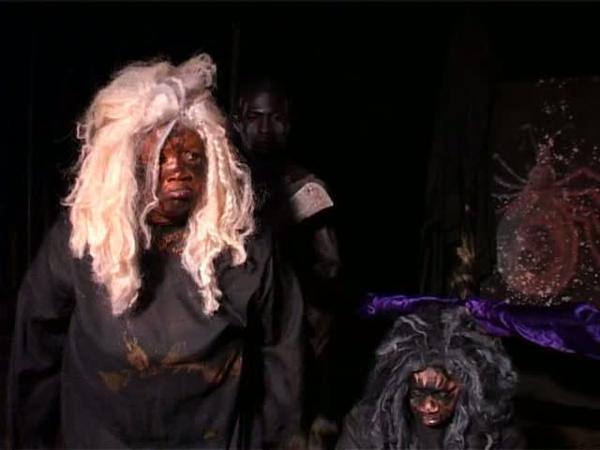
Puss in Boots
Puss in Boots

2011![]()
Directed by Chris Miller

We all knew there would be a Puss in Boots movie the second the image of Puss with his giant cute eyes became a computer desktop background months before Shrek 2: Dark Territory hit theaters. And while the Shrek series has been on a rocketship to planet Crap, Puss in Boots manages to be more entertaining than any Shrek sequel. And I’m not just saying that because I liked the film and saw it for free at an advanced screening. In fact, I had a bad time at the theater until the film started, thanks to some awful customer service that guaranteed I’ll never buy concessions there again. But the humor was good enough to calm my nerves and even get me happy again.

Puss in Boots is a spinoff of the Shrek films, but manages to feel somewhat independent of the Shrek universe while still being a part of it. There are still fairy tale elements running around, but the desert environments, Mexican flavor, and wild west inspiration give us a different spin. We follow our familiar character, Puss in Boots, as he has a prequel adventure that is both a story of its own and an origin story (done in flashback.) The decision to not make it a direct origin story, but to start from a familiar place and then go backwards before heading forwards was the right one. We already like Puss in Boots, and don’t need to be sold on liking him. The flashback to his childhood instead is plot related, making it feel important and not just filler.


|

Bauhinia Heroine concept poster
The concept poster for Bauhinia Heroine – loosely “based” on the real life Bauhinia Heroine and starring Chrissie Chau and directed by Stephen Shiu, Jr (of 3D Sex and Zen fame!) has hit Weibo, the Chinese Twitter:
via TheGoldenRock


